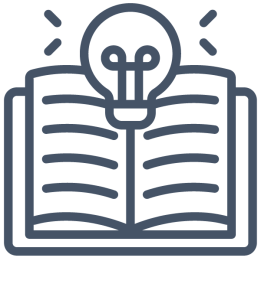Week 6: Evaluating sources III
The ACT UP framework

Overview
We can now evaluate sources in terms of the author and context (primary, secondary, tertiary) and the audience (academic, popular, news, social media).
We also need to evaluate sources in terms of the authority of the author and any inherent bias that might be embedded in the creation of a source.
This week, we work with one framework for evaluating sources based on bias: The ACT UP framework.
ACT UP stands for:
- Authority
- Currency
- Truthfulness
- Unbiased
- Positionality and privilege
This framework is only one set of criteria for evaluating sources. However, these criteria encourage us to be attentive to the social, political, and economic contexts in which an author’s credibility is established and the impact of these contexts on the nature of information being produced.
For example, social, political, and economic barriers may result in some people being excluded from educational programs and research positions and, therefore, certain topics are under-researched and not well explored or understood.
Readings
Section I: Short story
Brier, D.J., & Lebbin, V.K. Teaching information literacy through short stories. Rowman & Littlefield.
- Chapter 1: The amphibious calvary gap by J.J. Trembly as told to James E. Thompson. (pp. 15-18).
Section II: Choosing sources
Maccallum. L. (2020). Choosing and using sources: A guide to academic research, 1st Canadian edition. https://caul-cbua.pressbooks.pub/choosingsources/
- Chapter 25: Thinking critically about sources
- Chapter 26: Evaluating for relevancy
- Chapter 27: Evaluating for credibility
- Chapter 29: Author and publisher
- Chapter 30: Degree of bias
- Chapter 31: Recognition from others
- Chapter 32: Thoroughness
Before class activities
 Key questions to ask while reading and watching
Key questions to ask while reading and watching
- What makes a source credible?
- What makes a source relevant?
- How is bias defined?
- How do I evaluate an author’s bias?
- What tools can I use to evaluate bias?
 “Pile of words”: Group and label key concepts
“Pile of words”: Group and label key concepts
Organize into two lists of similar terms and label each list (include definition of each label).
Remember: You may already understand some of these ideas relatively well and others may be new to you—you are encouraged to look up (e.g., in a dictionary or encyclopedia) the unfamiliar concepts in order to create your lists.
Make note of your reasons for grouping the ideas together as you will share them in class. These are self-paced individual activities, for which there are no right or wrong answers. The instructor will not grade this work.
 Predict a learning outcome
Predict a learning outcome
After class activities
After class, annotate each reading for key ideas. For videos and podcasts, you can annotate the transcript.
Summarize the author’s key ideas from each reading.
Highlight the following information:
- Purpose of the reading;
- Scope (the extent of the study);
- Thesis (the main argument[s]);
- Method (research method if applicable);
- Outcome(s) and conclusion.
Respond to the following statement about the readings: do you agree or disagree with the statement and why?
“Probably all sources exhibit some bias, simply because it’s impossible for their authors to avoid letting their life experience and education have an effect on their decisions about what is relevant to put on the site and what to say about it.” (Maccallum, n.d.).
Did this reading provide any inspiration or insights you can use in this or any of your other classes? If yes, what is the inspiration and/or what are the insights?

